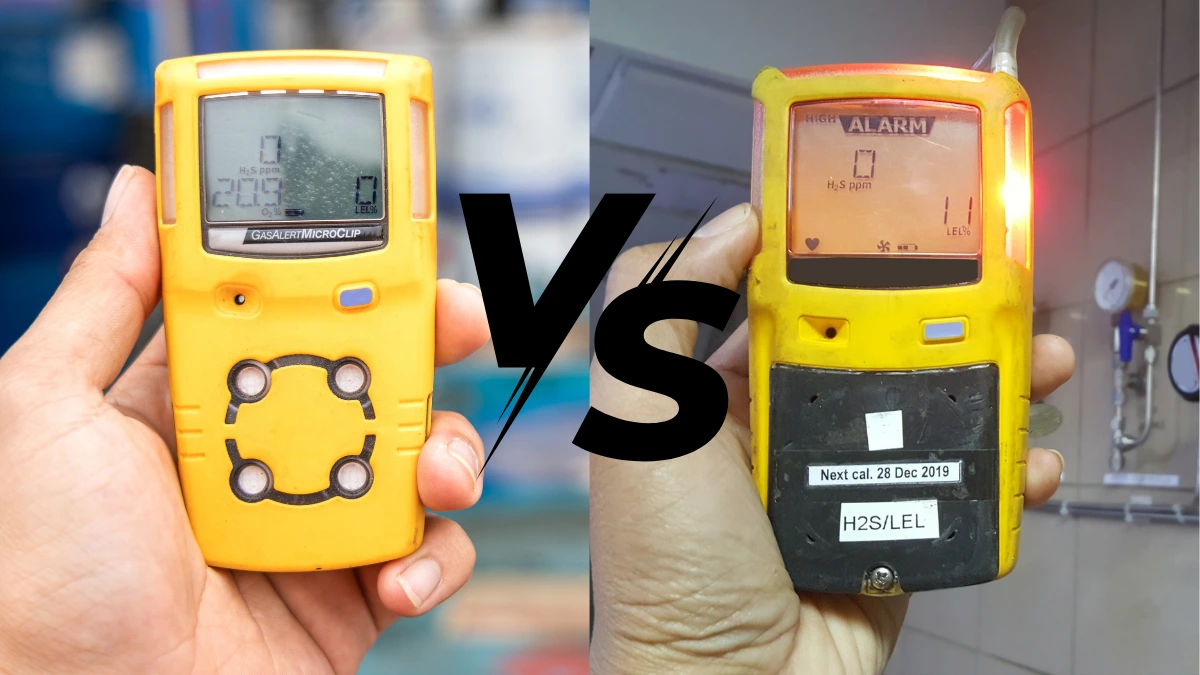Single gas detectors and multi-gas detectors are the keys to detecting the presence of hazardous gases or gases that pose a potential risk in an environment due to leaks. Although both maximize detecting hazardous and flammable gases, single gas detector vs multi-gas detector have some significant differences.
The differences between a single gas detector vs multi-gas detector include several aspects, such as gas detection focus, application, advantages, and disadvantages.
This article will delve into the important differences between single gas detector vs multi-gas detector to detect hazardous and flammable gases.
What is a Single Gas Detector?

A single gas detector is a type of detector designed to detect only one specific type of gas. Examples include detectors for hydrogen sulfide (H2S), carbon monoxide (CO), or oxygen (O2).
This device is ideal for use in areas with potential single gas hazards to monitor specific gases. In detecting gas leaks, this detector is capable of monitoring oxygen levels in confined spaces.
With this device, users will receive warnings to take quick preventive action when the monitored gas exceeds safe limits.
What is a Multi-Gas Detector?

As the name suggests, a multi-gas detector can detect more than one gas threat. This device is more commonly used in enclosed spaces, as they are more likely to be exposed to multiple types of gas simultaneously.
A multi-gas detector combines multiple sensors, such as electrochemical and catalytic sensors, into a single device, making it suitable for protecting against various types of gas threats, such as hydrogen sulfide (H₂S), methane (CH4), and carbon monoxide (CO).
The Differences of Single Gas Detector vs Multi-Gas Detector

A single gas detector and a multi-gas detector look similar, but they have different functions in detecting hazardous and flammable gases. Here are the differences between a single gas detector vs multi-gas detector:
Gas detection focus
Single gas detectors have a detection focus on one specific type of gas, such as carbon monoxide (CO), hydrogen sulfide (H2S), or oxygen. Its use is ideal for locations with certain specific gas areas.
Meanwhile, multi-gas detectors are able to detect several types of hazardous gases simultaneously, such as CO, H2S, combustible gases, and are able to detect oxygen deficiency or excess.
Application
Because it focuses on detecting a specific type of gas, a single gas detector is applied to work areas that only have a potential risk of exposure to certain types of gas.
Single gas detectors are ideal for areas that contain flammable gases, such as oil refineries or coal mines.
For complex work environments with various potential gas hazards, it is more suitable to use a multi-gas detector that is able to detect several types of gas simultaneously.
Multi-gas detectors are often applied in tanks, sewers, underground work areas, the oil and gas industry, mining, chemical, manufacturing, and at fire sites to detect various hazardous gases.
Advantages A single gas detector has advantages in terms of size, usually has a compact size, is small, and fits in the hand. Compared to multi-gas detectors, this tool is easier to use and has a more affordable price.
Multi-gas detectors have the advantage of providing broader protection, allowing the detection of various potential hazards simultaneously. That way, it can provide more comprehensive information about the condition of the area being detected.
Disadvantages
Because it is only able to detect one specific gas, a single gas detector is less flexible to use. With the potential for changes in working conditions or potential exposure to various types of gas, a single gas detector will not be able to perform its duties.
Multi-gas detectors can cover the shortcomings of single detectors that are not able to deal with potential changes in working conditions or potential exposure to various types of gas. However, the disadvantages are a higher cost and more complex use.
Even further, the use and interpretation of data from multi-gas detectors requires training of personnel in their use.
Which One to Choose?
The difference between single gas detector vs multi-gas detector is unavoidable. But to choose the right gas detector, users can consider the following:
- Work environment: Consider the type of gas present in your work environment.
- Monitoring needs: Need to monitor one type of gas, or is there potential exposure to a variety of other gases?
- Convenience and portability: Prefer convenience in use or good portability?
With the above in mind, you can decide whether to use a single gas detector or a multi-gas detector in your work environment.
That’s the difference between a single gas detector vs multi-gas detector, which can be your consideration in choosing according to your personal needs.
If your work environment has only one type of gas to monitor, a single gas detector with its user convenience is a good choice.
But if your work area has potential exposure to various other types of gases, although its use is quite complicated, choosing a multi-gas detector gives you better portability.